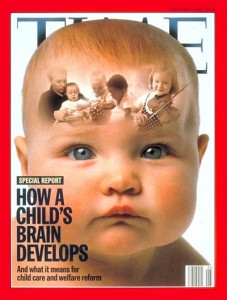From the time we’re babies, our brains are like insatiable sponges–absorbing the sensory sights and sounds all around us, recording the events our lives.
Our memories—whether near the surface or stored within our subconscious mind—flash back at us during the night in dreams. And they reappear during the day too, continually reminding us of the past as we record everything in the present.
Whether we’re conscious of it all or not, nothing is forgotten. Everything is stored away. And for anyone wanting to write a memoir, that’s very good news.
The challenge, of course, is accessing our memories in vivid detail, for any good memoir depends upon reconstructing events, painting visual pictures, and recalling actual conversations.
Being only too human, of course, our memories sometimes fade.
When I started writing my memoir, KATIE UP AND DOWN THE HALL, I admit to being worried. I never kept journals or diaries. I hadn’t written long letters that I could borrow back for reference. Nor did I tape-record interviews.
All I had was what was inside my head. (Thankfully, scientists say that our brain’s memory bank is 1000 times larger than the average PC. So I figured it must all be “up there.”)
For me, it all starts at the keyboard. When I sit in a focused, relaxed state, my thoughts flow out of my fingers. For others, though, writing it out longhand, or talking into a tape recorder, or being interviewed by a ghostwriter works even better. When I work with clients, we record 30-50 hours of conversation to do the job right. It sounds like a lot, but an hour or two spread out over six weeks yields all the material needed. It’s a marathon of reminiscence.
Sometimes, in my own writing, when I’m stuck or need inspiration, I use a special trick for activating my memory: I open up my collection of leather scrapbooks, all of them lined up like soldiers on the bookcase, each organized by theme—weddings, birthday parties, vacation trips, jobs, dog adventures, etc.
As I sit at my desk looking at photographs, I can actually relive the moments documented in them. Memories come flooding back. And I find myself totally immersed, experiencing a thousand feelings. Emotion always releases memory. And in that instant, I re-experience the events of my life all over again.
So can you. Whether it’s home movies, photos, tape recordings, E-mails, journals, letters or diaries, all these touchstones to the past can stimulate your writing.
And even if you don’t have any of these tangible references, you have the most precious commodity of all–your internalized memory. It can never be erased. It’s a magnificent space. And tapping into it, we capture the entire picture of our lives, one that’s just waiting to be written down and published.












